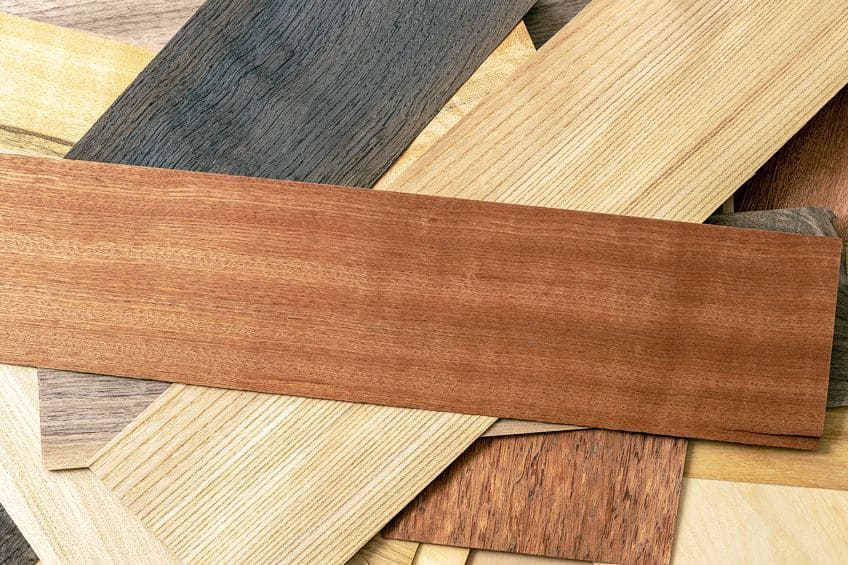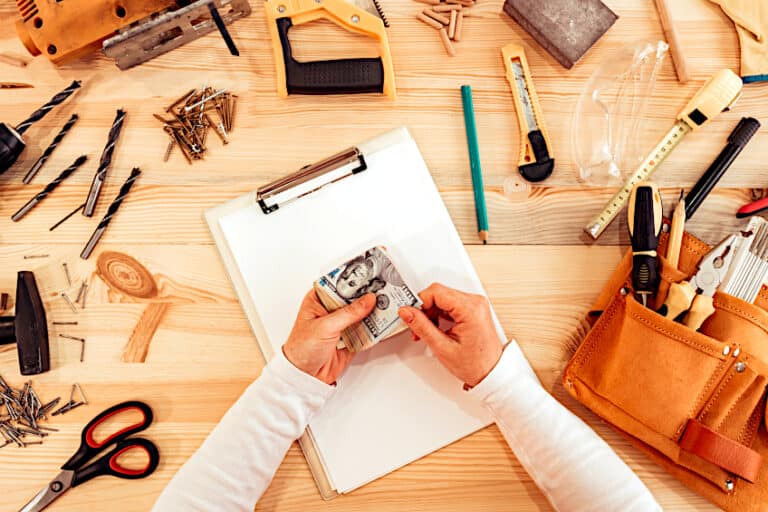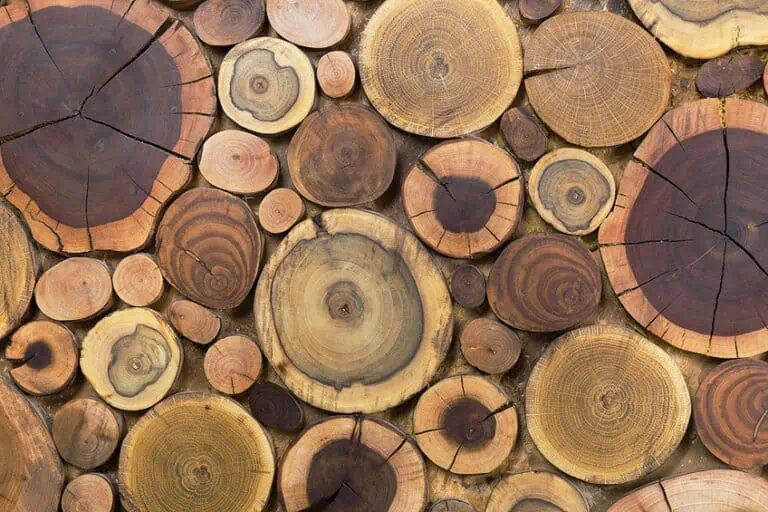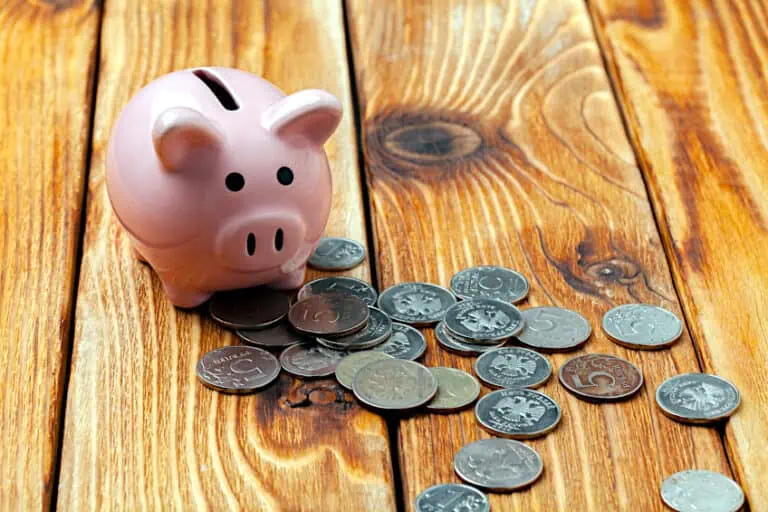Types of Plywood – Exploring Plywood Types and Grades
As technology has improved, we have found innovative ways to replace materials that were simply too expensive to manufacture or unsustainable in the long run. We have replaced expensive metal products with longer-lasting renewable plastic ones, we have discovered renewable sources of energy and we have even found ways to improve existing materials and use them in ways that are more effective and more sustainable. One of these materials is an engineered wood known as Plywood. So, what is Plywood? How many types of plywood are there?
Table of Contents
- 1 What Are Plywood Ratings and Grades?
- 2 Why Does Plywood Vary in Thickness?
- 3 The Different Types of Plywood
- 3.1 Veneer Plywood
- 3.2 Multi-Density Fiberboard
- 3.3 Lumber Core Plywood
- 3.4 Apple Ply Board Plywood
- 3.5 Outdoor Graded Sheathing
- 3.6 Subfloor Use Plywood
- 3.7 Softwood Plywood
- 3.8 Hardwood Plywood
- 3.9 Aircraft Plywood
- 3.10 Marine Plywood
- 3.11 Overlaid Plywood
- 3.12 Structural Grade Plywood
- 3.13 Lesser-Known Types of Plywood
- 4 What Are the Key Differences in Plywood?
- 5 Are There Alternatives to Plywood?
- 6 Frequently Asked Questions
What Are Plywood Ratings and Grades?
Plywood forms part of a group of woods known as engineered woods. Engineered woods aren’t “fake” woods that some scientists made a lab or something, engineered woods are essentially boards that consist of a combination of different woods to when forced together form a material that has ideal characteristics for a specific application.
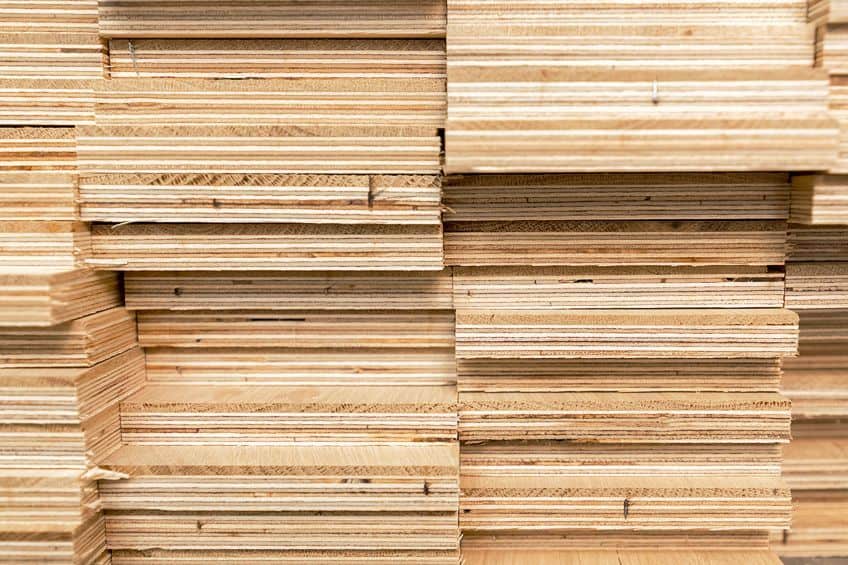
Plywoods are typically made out of veneers which are large thin sheets of wood that when joined together create a solid piece of board. These boards are typically joined together with epoxy and then compressed and heated simultaneously to reinforce the boards’ density and strength. The possibilities are endless with engineered woods as they allow you to create a board with the ideal characteristics for your intended application, you could create a board out of pine and oak if you wanted to, which would result in a board with incredible tensile strength and robust flexibility.
As we mentioned earlier there are many types of plywood that can be identified by a combination of letters on the surface or edge of the plywood, these identifiers will indicate what grade of the board you are looking at, which indicates things such as strength, price, integrity, width, how much knots it might have, and even types of wood that have been used it its construction.
This being said let’s have a look at the types of plywood available as well as their characteristics.
Investigating the Grades of Plywood
We grade Plywood the same way we tend to grade meats. Plywood types range from A to D (A B C D) with the highest grading being A, and the overall quality and versatility of the plywood decreasing as one moves forward through the letters. You might encounter a combination of these letters (AB) of which the first letter is an indication of the surface veneer and the second refers to the core veneer which makes up the majority of the board’s mass. If your grading indicator has an X at the end of the letter combination (AB X) it means that this board can be exposed to moisture to a certain degree and has likely not been kiln dried before the sale.
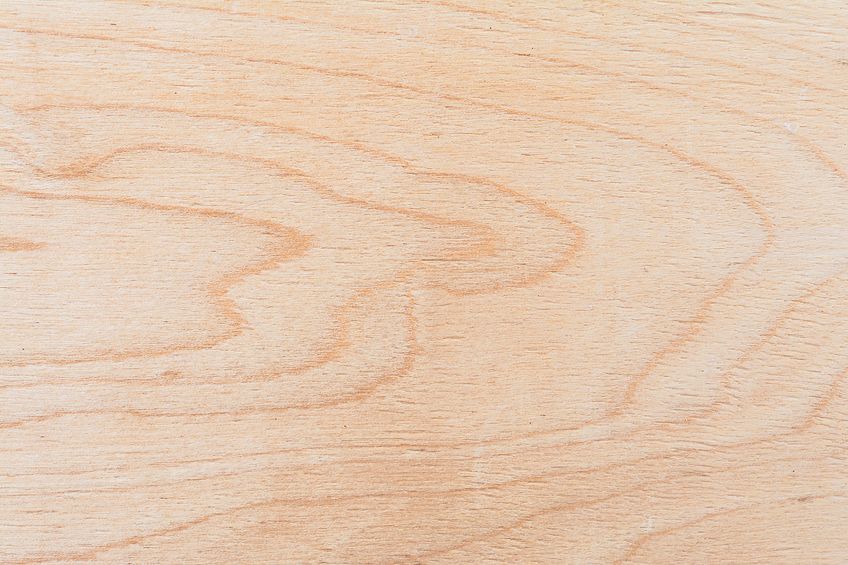
Grade A Plywood
As we covered previously, plywood is made up of a number of veneers which are paper-thin sheets of wood. Just like conventional pieces of wood these sheets can have imperfections and knots in them which can affect the quality of the wood and even the finish. Grade A plywood consists of essentially flawless veneers, which makes it an extremely sought-after grade of plywood, but the rules of supply and demand still apply in the wood industry which means that this grade of plywood could put a hole in your pocket.
This definitely isn’t the type of plywood you want if your workpiece won’t be displayed for all the world to see, or if the surface could be easily damaged.
However, if your elite veneer finish will be on display you should know that since the surface finish of Grade A plywood is so smooth it is easily treated with paint, wood stain on resin to protect it from scratches, resin, or impact. Grade A plywood veneer is typically used on the surface of the board, and grade B or lower wood types will be used for the core of the board.
Grade B Plywood
While not quite as flawless as Grade A plywood, grade B plywood is still pretty pristine and does not appear to have any noticeable imperfections. You might notice it is slightly rougher than that of the grade A plywood which is good news for you as it means that you might be able to get this type of plywood at a marginally cheaper price than grade A Plywood. Grade B Plywood typically has minor imperfections, so if you are willing to put in the elbow grease instead of the extra couple of dollars this could definitely work in your favor.
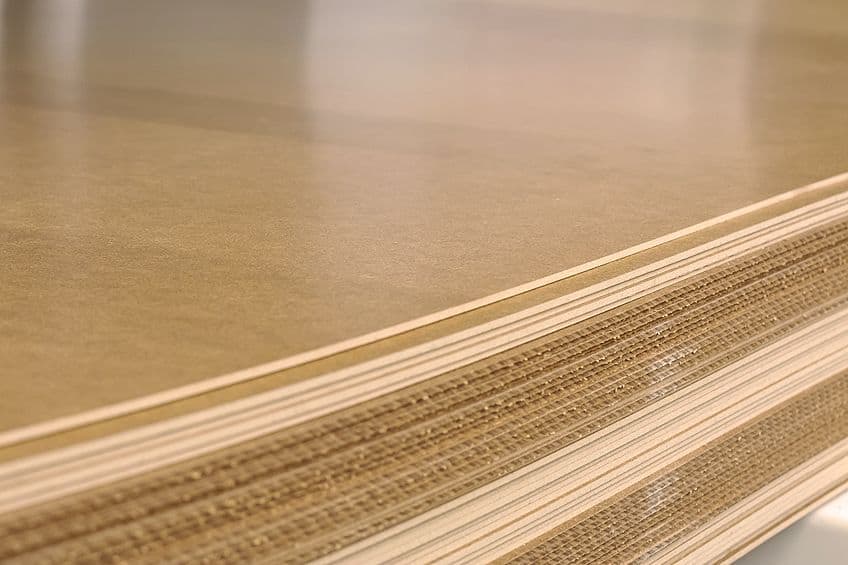
Depending on the core wood, grade B plywood can have the same tensile strength and flexibility as grade A plywood. You might be asking yourself how some plywoods have imperfections and others don’t if plywood is an engineered wood, and therefore should not be affected by the way wood naturally forms. The answer is that Grade A and Grade B plywood are purposefully repaired and polished so they can be sold at a high price, put simply this means that all plywood boards have imperfections when they are created, but for Grade A and B, most of these imperfections are corrected and sold to you in a finished or semi-finished state at a higher markup.
Grade C Plywood
By now the old saying “you get what you pay for” might be rattling around in your head, and you would be right to think so. Plywood is essentially the equivalent of buying a cup of coffee at your local Starbucks compared to making your own at home. You pay for the preparation and labor required by the barista to make that late for you, including the cup and lid the drink comes with. Making your coffee at home and throwing it in your thermos will require more effort on your part, but it will cost you significantly less than the cup you would have bought at Starbucks.
Grade C plywood is a lot like the cup of coffee you would make yourself at home, assuming you treat yourself to some decent quality coffee beans and know just the right amount of sugar for what you consider to be the perfect cup of coffee, you have all the right raw materials to make your coffee just the way you want it.
Grade C plywood might not have a good finish or particularly good quality core veneers, but it gets the job done. You could use this grade of plywood for load-bearing purposes or use it to create a robust workbench if you so wish, and you don’t have to live with the rough finish either. With some sandpaper, wood filler, elbow grease, and a little paint grade C plywood can be transformed into something eye-catching quite easily. Grade C plywood is widely characterized as having knots with a diameter of roughly 1.5 inches.
Grade D Plywood
If you happen to be picturing some rotted pieces of board that are barely held together with strings of failing adhesive, you’d be wrong. Of all the Plywood types we have covered this far, Grade D plywood is subjectively the worst, but it is by no means unusable. In fact, it is just a slight drop in quality compared to grade C plywood. If grade C plywood is premium coffee beans that are finely roasted, then Grade D plywood can be characterized as high-quality instant coffee (the ones that come in the sachets).
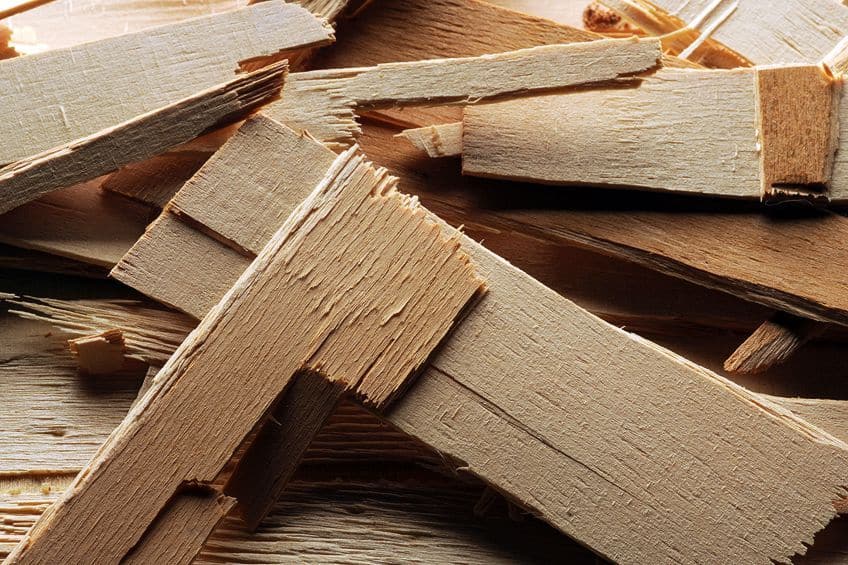
Grade D plywood can be used for the same purposes as grade C plywood, but the quality of the veneers used for both the core and the surface of the board is of a lesser quality compared to the grades of wood we covered previously. These boards have not been touched at all and are basically woods that have been joined, heat-pressed, and are then sold directly to you. This does mean that you get these boards significantly cheaper than other grades, but as a trade-off, you will have to put in quite a bit of effort if you intend to make the board presentable.
Knots will have to be removed, sanded, and filled by your own hand which can be a drag especially if your project is time-sensitive, although if you are looking to control every aspect of your workpiece from paint to primer, to sealer, grade D plywood might be exactly what you are looking for.
The upside of using this grade of plywood is that the finish, shape, and tolerances are only limited by your imagination and willingness to exercise your willpower. This grade of plywood is typically characterized by the quality of both the surface and core veneers, in addition to knots with a diameter of roughly 2.5 inches.
Summarizing the Different Grades of Plywood
In the table below, you will find a summary of the different plywood grades and their characteristics to help you choose the best wood for your project.
| Type of Plywood | Characteristics |
| Grade A Plywood | ● Near-perfect surface finish ● Large ovular grain/knots ● Easily sanded ● Holes filled and sanded h ● High quality veneer for core and surface. |
| Grade B Plywood | ● Near-perfect surface finish ● Large ovular grain/knots ● Easily sanded ● Most holes filled and sanded ● High quality core veneer but surface quality can vary. |
| Grade C Plywood | ● Rough surface finish ● Numerous smaller 1.2-inch knots and grain visible ● Not as easy to sand down ● Holes will not be filled ● Serviceable quality veneer used for surface and core. |
| Grade D Plywood | ● Rough surface finish ● Numerous smaller 2.5-inch knots and grain visible ● Not as easy to sand down ● Holes will not be filled ● Serviceable quality veneer used for core, but surface quality is typically poor. |
Why Does Plywood Vary in Thickness?
Have you ever noticed that plywoods vary in thickness? We mentioned previously that there are different qualities of veneers used in these boards depending on the grade the manufacturer is trying to make. Well, the grade of plywood can also indicate the number of sheets of plywood used in a board, which can vary according to the purpose the plywood is being created for. On the off chance it went over your head, it is called plywood due to the varying plies of veneer used to create a board, and they vary in thickness due to the tensile and structural strength needed for their respective applications.
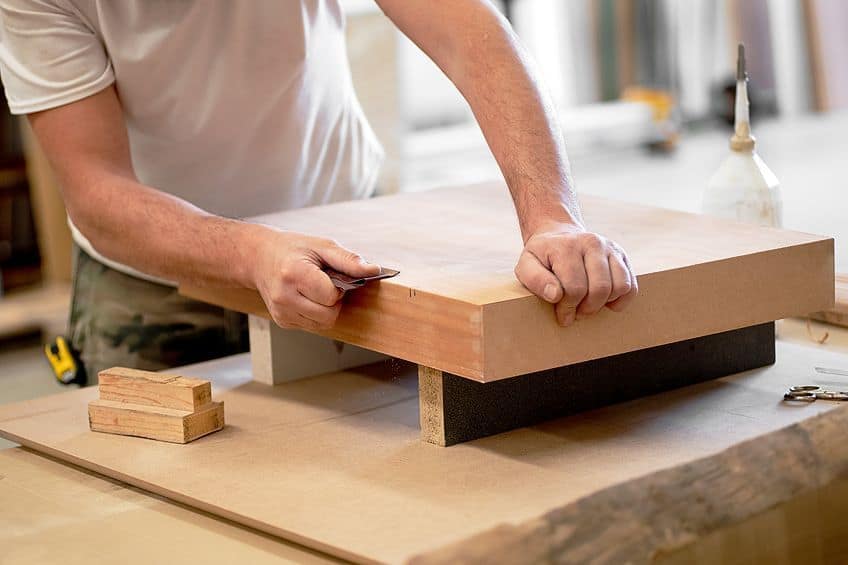
These applications can range anywhere from load-bearing beams for housing, to simply a workbench for your tools, but they are specifically manufactured in variations of 13 plies to meet the wide range of applications. Boards that utilize one or three plies are good for domestic purposes such as small furniture or even crafting purposes as you won’t be overcompensating for strength or flexibility, this is also the most commonly sold type of ply on the market.
Boards that have five layers of ply are pretty strong but might be overkill for most domestic purposes and a bit too weak to be used in commercial construction purposes, therefore (although there are many industries that use this thickness of plywood) it is not purchased as much for domestic or commercial purposes compared to the other two commonly manufactured ones.
The last variation of plywood is commonly known as multi-ply boards. These sheets of plywood have a veneer count of seven to thirteen or more depending on what the customer needs.
These plywood boards are extremely strong and can be used for suspension or loadbearing purposes. They often receive a special formulation of industrial adhesive and pressure treatment to ensure their integrity in the worst conditions. This is the kind of plywood you would use to make a wooden gazebo or to erect the interior roof frame of a house. It can be used both outdoor and indoors with minimal treatment needed, in fact, if you chose to stain or waterproof this variation of plywood you could arguably use it for much of the same structural purposes as common metals.
As you can see there are different types of plywood for different applications, therefore it is important to familiarise yourself with the strengths and weaknesses of each thickness and grade to ensure you get the absolute most out of your next purchase. Using the incorrect thickness or purchasing the incorrect grade of plywood can cost you valuable time especially if you will be finishing/spraying your workpiece yourself, therefore triple check your materials using your knowledge of the different types of plywood.
The Different Types of Plywood
We mentioned previously that plywood is just one type of engineered wood, and although there are different grades of plywood there are also different types of plywood. These woods can be differentiated by their composition and appearance much the same as one would identify different plywood grades. Let’s have a look at some different plywood boards and how they differ from one another.
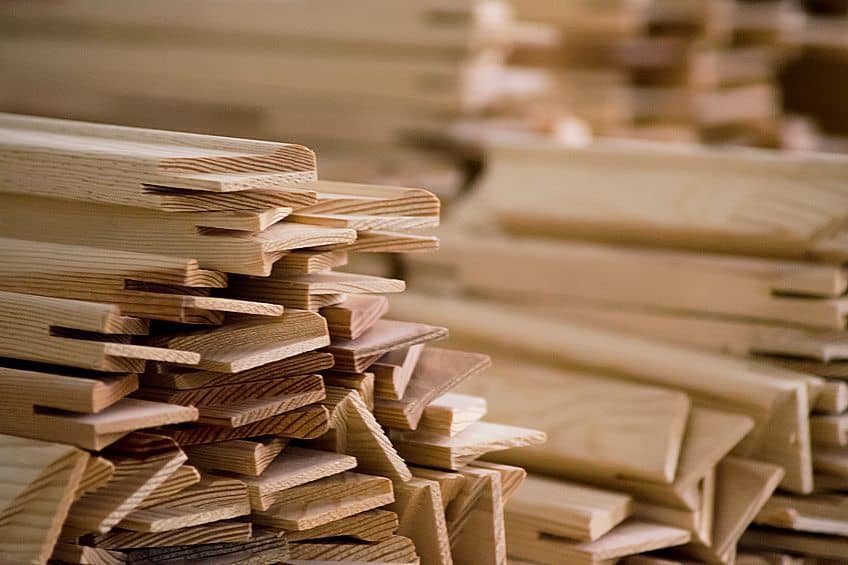
Veneer Plywood
This type of plywood is most commonly used and sold; it is comprised of thin layers of wood known as veneer. These layers are stuck together using special industrial-grade adhesives and chemically bonded to one another to form a solid wood board. These boards can be incredibly strong and can be used in applications such as load-bearing beams, bed frames, furniture, art installations, furniture, and crafting.
In some cases, these boards are treated for underwater use and can have the same (if not greater) tensile strength as steel. This is one of the thinnest plywood types in production.
Multi-Density Fiberboard
Fiberboard is not technically plywood, but rather another type of engineered wood that is commonly referred to as plywood. This type of board consists of little wood chips and fibers which are bonded together with a special adhesive and then compressed together to form a solid board.
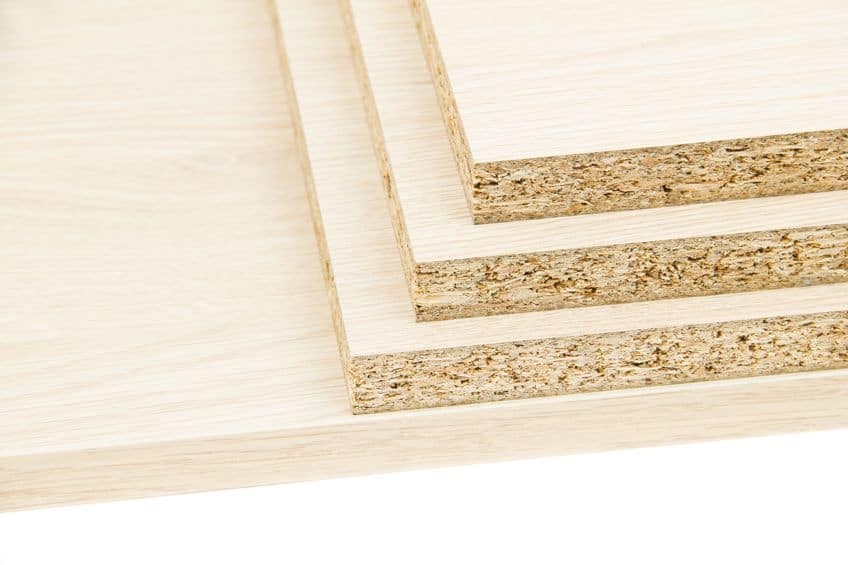
The nice part about this type of plywood is that it can be engineered to have any number of characteristics because of its near-infinite number of materials that can be added to the core materials. These boards are often heat pressed and are extremely strong, flexible, durable, and lightweight. This being said, it comes as no surprise that they are often used to create doors and living room furniture, which can be sold at a fraction of the price of hardwood furniture.
Lumber Core Plywood
This type of plywood might remind you of an ice-cream sandwich. It provides you with the best of both worlds, giving you the mirror-smooth finish of veneer with a solid piece of lumber at the core. The great thing about this type of plywood is that it is “solid” and simply uses veneer as a covering for the primary surfaces and edges, which means the lumber at its center is protected from mold and rot. The only disadvantage you might encounter with this type of plywood is its weight as the core is a solid piece of conventional hardwood, but this could work to your advantage if you need a long solid surface such as a countertop or conference table.
This type of plywood is also great for when you want something that looks like a high-quality finish hardwood but don’t have the time or money to treat a solid piece of lumber this size.
Apple Ply Board Plywood
This is a pretty niche type of plywood. Apple ply is a brand name of plywood that owns a few plywood designs. They are known for their premium grade hardwood plywood designs which incorporate unique patterns and compositions to create one of the highest qualities and quite unique patterns. Their products have a good reputation in the commercial and private woodwork industries because of the impeccable quality of their boards.
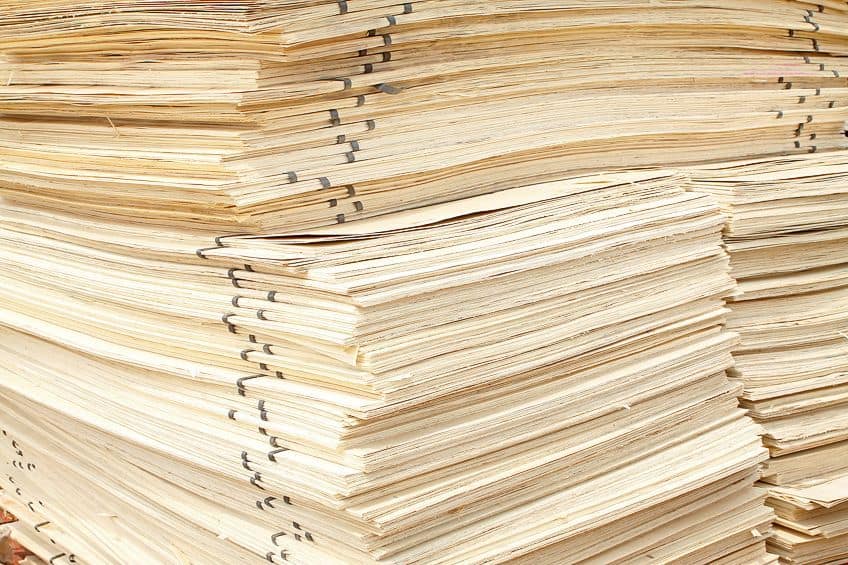
Their boards are used to create things like kitchen drawers, bedroom cabinets, and bed frames. The edges are often sold unfinished, so you have the option of sealing and treating them as you’d like, but you also have the option of going for a pinewood veneer covering for a more presentable finish if your board is going to be in an open setting. If you choose not to (as more people seem to be doing) this type of wood works wonderfully in spaces with industrial-chic aesthetics.
Outdoor Graded Sheathing
This type of plywood is commonly used for things like outdoor struts and tresses. We mentioned previously that plywood grading with an X at the end of it means that the board has a particular tolerance for exposure to moisture and sheathing that has been graded for outdoor use would fall into this category. This type of plywood often does not have much aesthetic appeal but will have the strength and thickness to bear heavy loads or ensure structural integrity.
This type of plywood will often be created with an adhesive that is not water-soluble and might be treated with a waterproof resin to ensure that the board does not warp, crack, or split due to excessive exposure to moisture or heat.
Subfloor Use Plywood
It is often the things we see the least that work the hardest. We tend not to think too much about what is going on under our floorboards, and we don’t have to thanks to the incredible rigidity and flexibility of subfloor plywood. By no means the thinnest plywood, this type of board is used to manage the load of us and all of our belongings on a daily basis.
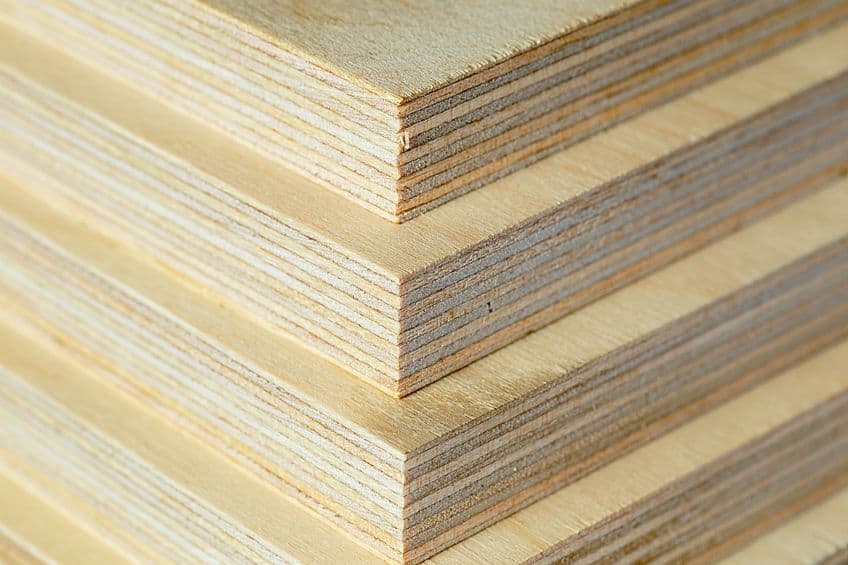
It is extremely strong, waterproof, 100% airtight, and will distribute and load or stress acting on it really well. This type of plywood is typically sold in the ¾ inch and 1 1/8-inch variety and keeping this in mind can stop you from being swindled by slick salesmen at your local supply shop.
Softwood Plywood
Although softwood plywood is created using woods like cedar, pine, redwood, and similar types of lumber, you should know that it is quite strong and is one of the most versatile types of plywood on the market today. Despite its name, this type of plywood is commonly used for construction purposes and has the ability to bear loads, bend, stretch and even fold if the thinnest plywood of this variety is used. You could use this plywood to build an entire shed or outhouse, or you could use it for smaller workpieces such as bookshelves, cabinets, ornate furniture, and even doghouse.
You can always rest assured that soft plywood is up to whatever task you have in mind, and as an added benefit this plywood is easy to treat if you need it to be waterproofed or impact resistant.
Hardwood Plywood
If your workpiece will be taking a considerable amount of force or will be part of an implement, you won’t be disappointed if you choose to go with a hardwood variation of plywood. Hardwood plywood can be used in applications like cricket bats, guitars, drum sets, or really robust sets of furniture due to its tough nature.
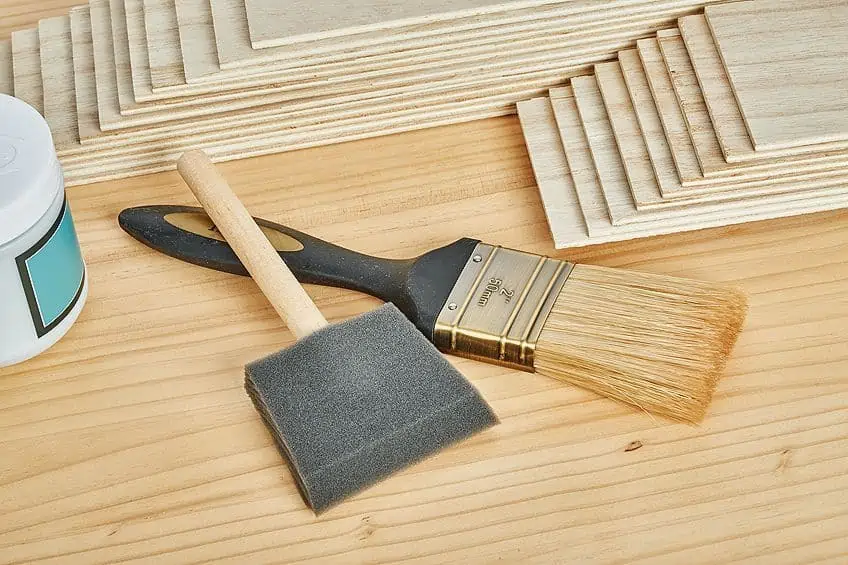
This type of wood is different from softwoods not only because the veneers used to create it are fibers like oak, walnut, and poplar but because they are stacked at right angles (opposite directions) to one another. This optimizes the board’s structural integrity and ensures that all when it is used for load-bearing purposes the force is distributed evenly across the entire board instead of just the center.
Aircraft Plywood
This is pretty much the cream of the crop when it comes to types of plywood. Aircraft-grade plywood (as the name suggests) is used on propeller-powered aircraft which need a durable, lightweight, rigid material in order to secure the pilot and ensure that the plane remains airborne. This type of board is constructed from hardwood which is extremely high quality with virtually no imperfections in the veneer. Remember that these woods need to withstand atmospheric pressure at speeds of past 60 miles per hour and therefore are constructed with the utmost precision.
This type of plywood is made of hardwoods like birch and mahogany, so if you think you can get this type of plywood for cheap, you’d be dead wrong. Although it might burn a hole in your pockets pretty quickly it is worth absolutely every penny, after all, it is difficult to put a price on your peace of mind or your safety.
Marine Plywood
Although the name may suggest it is waterproof, marine-grade plywood simply refers to the quality of the veneers used to make it. Marine-grade plywood is an extremely high-quality board that can be used for a number of applications such as outdoor furniture, fish tank lining, boat trimmings, and even things like wooden gazebos. Marine-grade plywood is defined and characterized by the quality of the wood used to create it, the wood must have no imperfections on the edges or knots in the surface. In terms of plywood thicknesses, this is right up there with subfloor plywood and therefore it can be quite heavy.
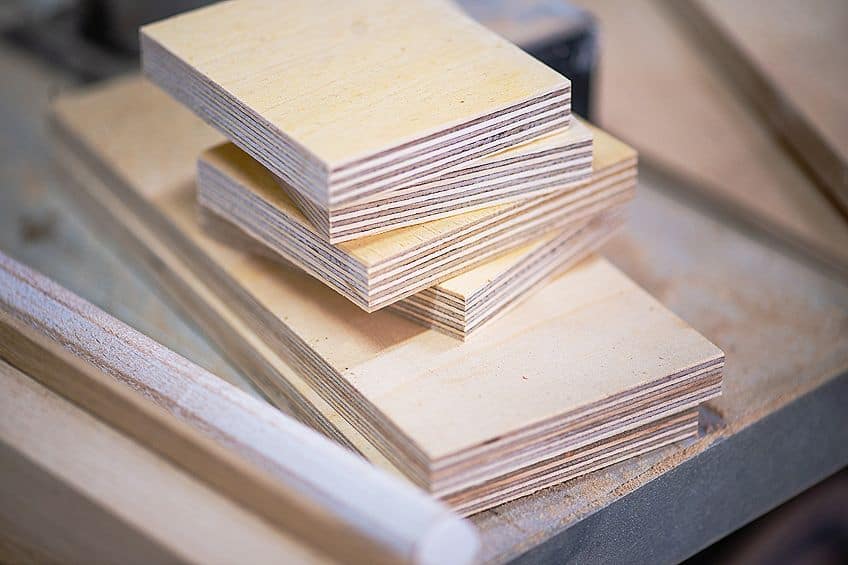
Marine-grade plywood is also quite strong and might need to be heated up during the joining process to be shaped. In order for this type of plywood to be considered “marine plywood” it must meet the aforementioned criteria and have a high-quality industrial-grade waterproof adhesive used to join the veneers. Once the veneers are joined the manufacturer could apply a clear waterproof resin or this could be an option available with your local wood supplier, alternatively, you could apply the resin yourself to ensure the wood is waterproof rather than water-resistant.
Overlaid Plywood
In terms of plywood thickness, overlaid plywood is one of the densest woods there are. Overlaid plywood comes in medium and high-density varieties, this is due to their primary usage being for high-quality furnishings such as high-end countertops, semi-permanent flooring, good quality tables and chairs, and similar items. Although these surfaces finishes are very attractive this is not their primary purpose, the finish is there to protect the softer veneer underneath from scratches or damage resulting from minor impact.
It’s a win-win situation since the integrity of the board is preserved and you get a board with a wonderful finish. This type of board can be quite heavy due to the amount of veneer and adhesive resin used to create it so it’s best reserved for applications where it is absolutely necessary.
As we mentioned previously the surface covering is pretty high quality, so you can expect to pay a bit more than you would expect for this type of plywood, so if you don’t absolutely need this type of board you could be better off using thick veneer plywood and treating the surface yourself.
Structural Grade Plywood
This type of plywood is pretty straightforward, it is a robust type of board that is used for structural purposes. This type of board can be used to create internal roof structures, frames for drywalls, or to create loadbearing beams. Due to the stiffness and the tensile strength of the wood used to create this type of board it needs exceedingly strong adhesives to ensure the boards do not come apart.
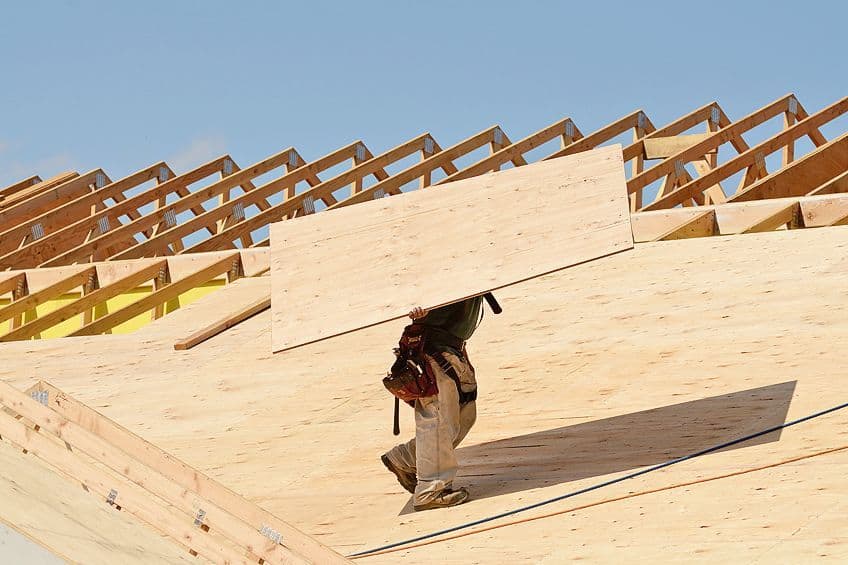
These woods are typical of C or D grade due to them not needing to be particularly good-looking. This being said you should be able to buy structural grade plywood for much cheaper than conventional grade A or Grade B types. This type of board is suited for indoor and outdoor purposes although if you are going to use it outdoors you may want to consider using a sealer or resin to ensure that wood does not warm, split or rot.
Lesser-Known Types of Plywood
There are other types of plywood and engineered woods that are not commonly used in commercial or industrial environments due to a number of factors, however, you should keep In mind that woods like tropical, MR grade, and composite plywood exist. These are specialty woods and won’t be available for purchase through most suppliers due to how niche their characteristics and respective applications are.
This being said, they are worth noting should you ever need woods with their specific properties, but a multi-density board will work just as well in a pinch.
What Are the Key Differences in Plywood?
There are some factors you should consider when choosing plywood for your next project. Besides the conditions the board will undergo in the chosen application, there are characteristics of all types of engineered wood that you should consider when perusing at your local supplier, so what are these characteristics and how should you go about looking for them?
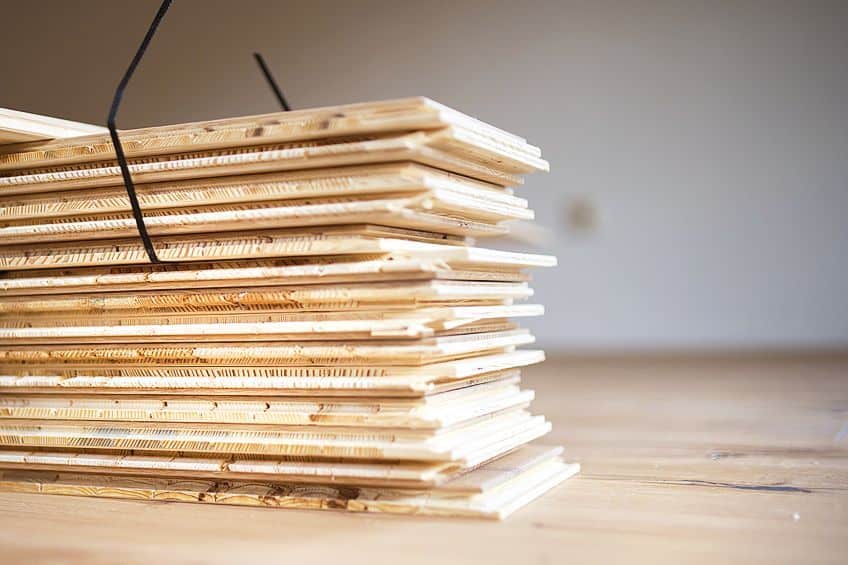
The Sheet Sizes
Plywood sheets come in a variety of sizes. There are types of plywood that are extremely flexible and can essentially be bent back in on themselves. This being said, there are also boards that are so rigid they can be used in place of structural steel. Determining the thickness of the board is simple enough, it should be displayed on the edge or the surface of the board, but you should note that these measurements are not always accurate so if you are heading out to get some plywood you should ensure that you bring along a tape measure.
Something else to take note of is that some suppliers use metric measurements (millimeters) to keep track of their stock so have your phone handy should you need to make the conversion. Conventional sizes for plywood are 4ft x 8 ft followed by 4ft x 9ft and 4ft x 4ft.
Grade of Your Wood
The grade of wood you use is important, and although we covered this topic previously it is quite easy to overlook when you are looking for wood for a time-sensitive project. This being said choosing the wrong grade of wood can result in you overspending not just by buying wood you don’t need but purchasing wood that is not conducive to your intended application. If you are going to be using wood for external use and you know that it will be exposed to excessive moisture or heat you should use wood that is graded for C or D as their finishes aren’t good to begin with and they are easy to treat with waterproofing resin.
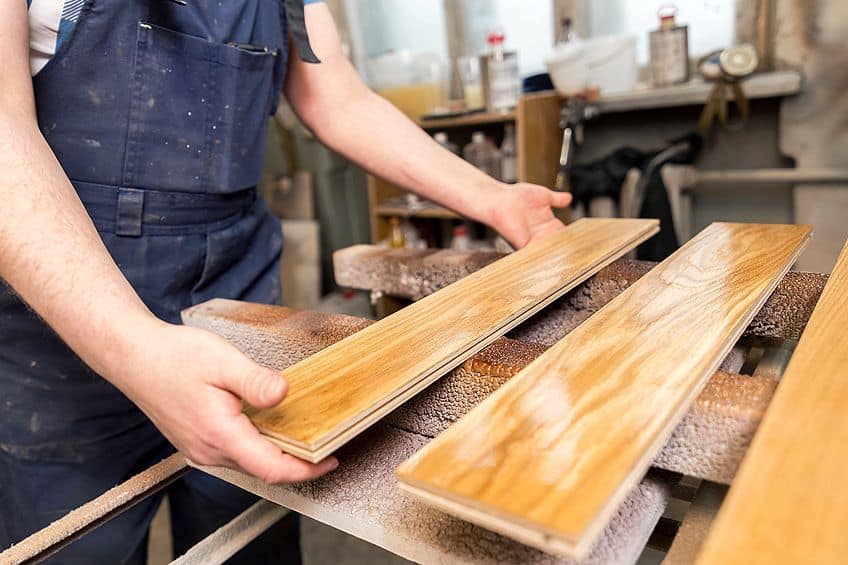
Also, when purchasing wood for external wood you should probably use wood with an X rating as this indicates that it has been approved for use in moisture-rich environments. Plywood types and grades can mean the difference between you having to re-do your entire workpiece, and you standing back and admiring your latest creation while pondering what color you’ll be painting it. Finally, plywood’s that have a rating of A or B are premium grade boards with very few defects (if any) and have really good finishes. Obviously, you should reserve these woods for interior use where their brilliant finishes can be on display for all to see.
Hardwood or Softwood?
The materials that plywood is made of can make a big difference when you are working with it, especially if you are working wood by hand. Thankfully we live in the 21st century and have power tools available so this doesn’t present much of a problem anymore, but the composition of wood veneer in plywood can make a considerable difference in its performance. Hardwood might sound stronger than softwood but in reality, this is just the lumber that the veneer/particles are made out of, although hardwood does tend to be a bit more durable than softwood in most applications.
Since hardwood is able to take a beating it is used for flooring that receives high foot traffic and or furniture which will be under load for a long period of time such as bed frames or fancy couches.
Hardwood is more difficult to cut compared to softwood though, and you will have an easier time finding a supplier that deals in hardwood plywood compared to softwood. Softwood is also a lot cheaper than hardwood in addition to being more abundant, therefore, since you could just go for a denser softwood and treat it to increase its lifespan it makes hardwood seem a bit unnecessary.
Are There Alternatives to Plywood?
There are a few alternatives to plywood if none of the boards we have looked at so far meet your requirements. Here are a few materials we think make great alternatives to plywood and other engineered woods.
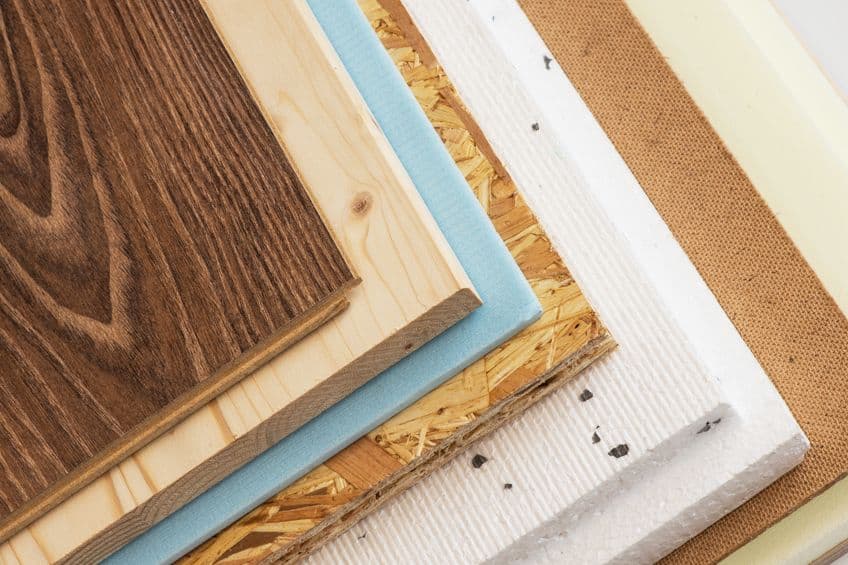
Composite Woods
Composite woods can easily be confused with plywood if you don’t look at the edges. Put simply, composite boards have solid wood cores which are covered with laminate, veneers, or both depending on what look the manufacturer is going for. They are typically sold in smaller sizes compared to plywood.
This is an easy way to give your board a great-looking finish without having to get your hands dirty, therefore this type of wood is typically used to create things like kitchen cupboards and/or drawers.
Particle Board
This is one of the most common types of engineered wood, especially at budget-friendly hardware stores. Particleboard is cheap and is fairly easy to manufacture too. Particleboard is also known as chipboard, which is characterized as wood shavings that have been stuck together in mass and compressed to create a solid board.
You should try your best to ensure these boards do not get wet or come into contact with excessive heat as they will crack and/or split if you are not careful. The downside to particleboard being so cheaply made is that sellers might try and pass it off as something else by covering the surface and edges in laminate or veneer.
Foam Board
There are various plywood types and grades on the market, but at the end of the day, they are still just engineered woods that are susceptible to rot, decay, and mold infestation. Foam board on the other hand is essentially PU (polyurethane) foam sandwiched between two pieces of chipboard. The core material has the same tensile strength as common plywood and is almost completely resistant to moisture damage and rot. This has led to foam board becoming really popular in recent years, not to mention that there is virtually no maintenance to be done on furnishings created with this material!
Now that you know what plywood is, what the different grades are, what the different sizes are, and the different compositions it can be found in its time for you to go out and put your newfound knowledge to use. Remember to always measure your board before you buy it, always ensure that you have the correct grade of the board for your application, and most importantly remember to wear appropriate safety gear when working with any wood or power tool!
Frequently Asked Questions
What Is Plywood Made Of?
What is plywood made of? Plywood is made of a number of thin sheets of wood known as veneers which are stuck together using high-grade industrial adhesive. When enough of these sheets are stuck together and compressed, they form a very strong sold board which we know as plywood.
Is Plywood Waterproof?
Plywood in its “natural” state is not waterproof but it does tend to accept waterproof coatings very easily. Even marine-grade plywood is only water-resistant and needs further treatment for it to be dubbed waterproof. You can easily waterproof most engineered woods such as plywood with waterproof resin which can be found at most hardware or woodwork retailers.
Is Plywood Stronger Than Chipboard?
Plywood is constructed differently compared to chipboard. Where chipboard uses wood filings and glue to create a solid board, plywood uses veneers that can be rigid and plentiful in a given piece of board. This means while relatively low stress will irreparably damage a piece of chipboard, plywood will simply distribute the same force over the surface area of the board and internal veneers.

I have been into woodworking since 2005 and woodturning since 2011. Because of my love for wood and woodworking, I started woodhappen.com to teach other enthusiasts about how to finish and seal wood, the best woodworking tools, the different types of wood, and everything else related to woodworking! Read more about me here.

